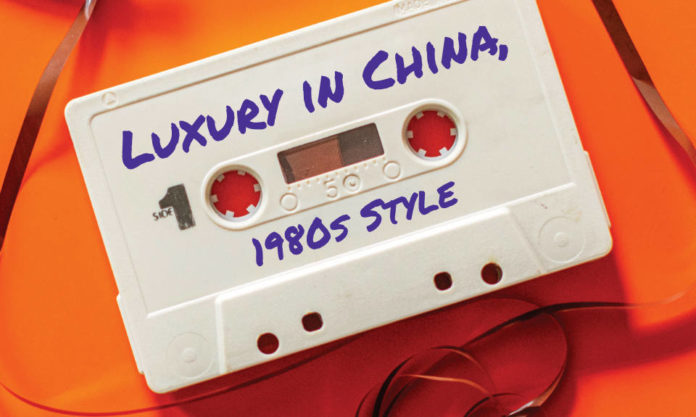In the eyes of many people today, today’s refrigerators, colour TVs, washing machines, and cars are nothing more than ordinary; few remember that which appeared in recent years was unimaginable 30 years ago. Back in the 1980s, the daily necessities of today that we take for granted were then rare and luxurious goods.
The Brick-like “Dageda” Mobile Phone
In the mid 1980s, Guangdong Province opened the nation’s first mobile communication network, ushering in the era of mobile phones in China. There were a mere 700 early adopters, most of them using the Motorola DynaTAC 8000X with its brick-like appearance.
Weighing in at more than 1 kg, and with a price tag of ¥20,000 and a talk time of 30 minutes, the brick was given the prestigious name, “Dageda” (大哥大). With limited supply, some buyers would turn to the black market, where it would cost up to ¥35,000.
- From Central Heating to Hotpot; China’s Luxurious Warmth!
- A Hygge Revolution; the New Chinese Luxury
- Younger & Younger; Latest China Luxury Shopping Trends Revealed
In that era, there was a popular saying; “If you have a Dageda, you have nothing to be afraid of when travelling all over the world”. In many ways, the Dageda marked the start of conspicuous consumption, becoming a symbolic tool for successful people to show off their wealth, not only a sign of riches, but also of status and class.
12-Inch Black & White Television Screens; What Luxury!
At the end of the 1970s, owning a TV at home was a big deal, one which could make the neighbours envious for years. Children and the elderly would come from afar just to see it. Despite the screen being black and white, and only 12 inches in size, people often gathered together in a courtyard to watch TV. No wonder; the price of an average set was several hundred renminbi, while the average monthly income was less than ¥100. Just as in other countries, this was a time of luxury when people were actually willing to sit down with their families to watch TV.
Luxury on Two Wheels
China used to be synonymous with the bicycle, but contrary to popular belief, that everyone had one was far from the actual case. In our era of shared bikes today, many would hardly believe that in the 1980s, a bicycle was one of three major items desired as a wedding gift. Those who received a bike would be envied by all their neighbours.
Owning a bicycle in the 1980s was not easy. While its cost was one barrier to ownership, so was the requirement for a bicycle license. Therefore, those who could contemplate buying a bicycle at that time not only had a certain economic foundation, they also had connections with people in the bicycle business.
The Cassette Recorders that Made Music a Luxury
Another measure of luxury in the 1980s was the size of your cassette collection. Referred to as one of the “four major home appliances”, along with TVs, refrigerators, and washing machines, the cassette recorder meant that young people could finally decide what they want to hear and that which they record.
Adolescents also soon cottoned on to the scam of “learning foreign languages” as a way to get their parents to spend several hundred renminbi on a cassette recorder. In actual fact, there was no exam foreign language listening test at the time.
- Luxury Instant Noodles, is Nothing Sacred Anymore?
- How Louis Vuitton Sued a Pub and Won
- Is Luxury Toothpaste the Holy Grail of Chinese Brands?
With pre-recorded music cassettes relatively expensive, so too did bootlegging become all the rage, if often only on a friend-to-friend basis. In an era without the photocopier, the lyrics of the music from the cassette inlays could only be copied by hand.
As a result, the first thing many boys did when they went to their friends’ house was to seek out the drawer with the tape collection; it was an absolute luxury to have a collection of more than 100 cassettes.
Volkswagen Santana; the Rolls Royce of 1980s China
With an equivalent price today of ¥1.8 million, average people of the 80s could hardly afford to look at a Volkswagen Santana. When the iconic car first entered the Chinese market, it initially sold for ¥80,000, but the rich tend to follow suit and this pushed the price to ¥180,000. At that time, the highest working-class monthly salary was a mere ¥34.
Today, these objects from the 1980s; phonographs, cassette recorders, CD players, VCD players, records, tapes and even MP3 players, have become a pile of electronic waste. Nowadays, with the internet as main driver for our global village, for young people, things like ripping tapes are simply ancient legends. For the older generations, memories such as these are the very definition of the luxury of their youth.









